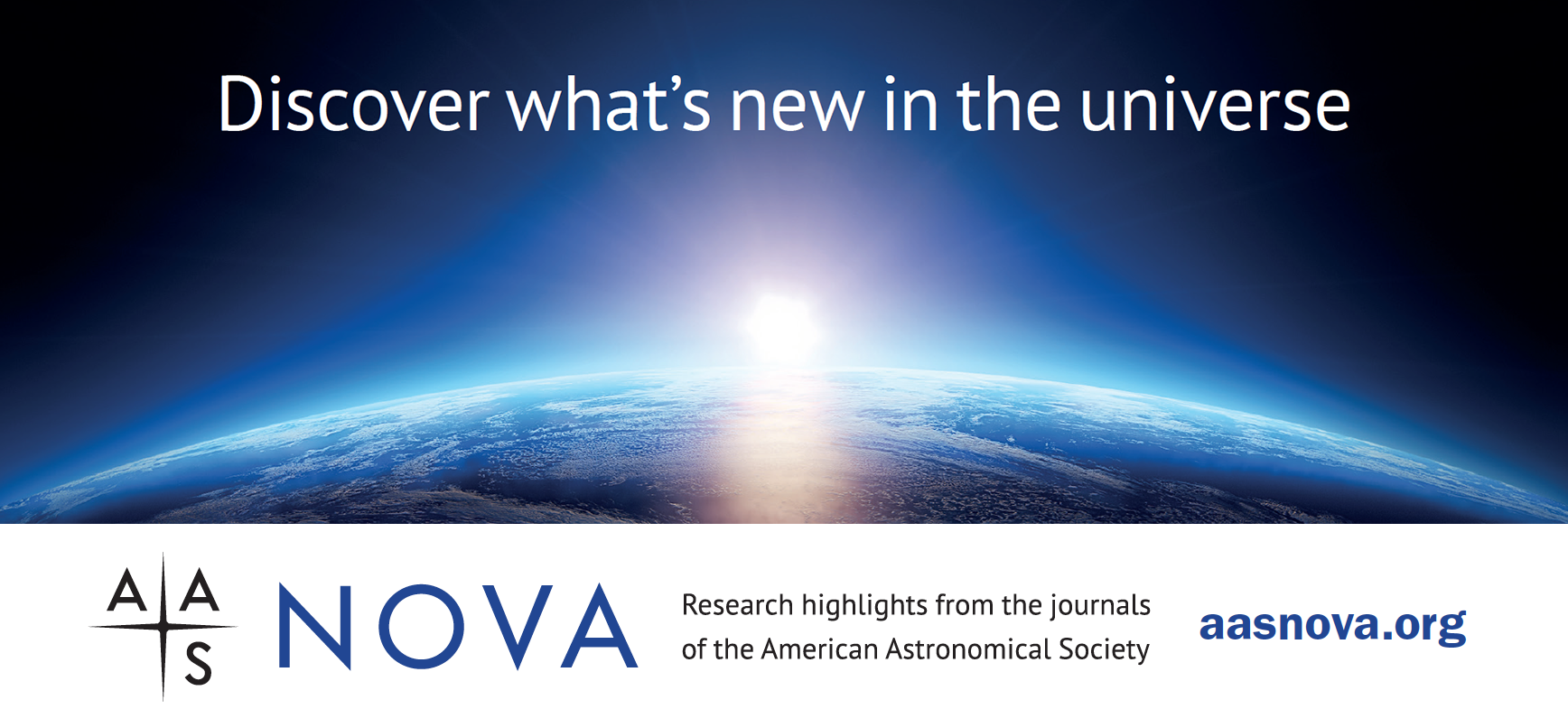Highlights from AAS Nova: 24 June - 8 July 2023

Kerry Hensley American Astronomical Society (AAS)
AAS Nova provides brief highlights of recently published articles from the AAS journals, i.e., The Astronomical Journal (AJ), The Astrophysical Journal (ApJ), ApJ Letters, ApJ Supplements, The Planetary Science Journal, and Research Notes of the AAS. The website's intent is to gain broader exposure for AAS authors and to provide astronomy researchers and enthusiasts with summaries of recent, interesting research across a wide range of astronomical fields.

The following are the AAS Nova highlights from the past two weeks; follow the links to read more, or visit AAS Nova for more posts.
7 July 2023
JWST Inspects a Quasar’s Neighborhood and Reveals a Strand of the Cosmic Web
JWST opens a new window onto the surroundings of quasars — extremely luminous galactic centers powered by accreting supermassive black holes — in the early universe.
5 July 2023
Could Axions Help Fast Radio Bursts Escape a Magnetar’s Grasp?
Theoretical particles called axions might provide a helpful disguise for fast radio bursts, helping them escape the confines of a magnetar’s magnetosphere.
28 June 2023
First Compelling Evidence for the Gravitational Wave Background
For the first time, researchers using pulsar timing arrays have found evidence for the long-sought-after gravitational wave background. This discovery opens a new window onto supermassive black hole binaries and, potentially, entirely new physics.
28 June 2023
Baby Brown Dwarf Might be Growing: JWST Observations of TWA 27B
Recently, a young brown dwarf got the full JWST treatment. Analysis of the data both confirms known trends and hints at new discoveries.
27 June 2023
Cool, Relaxed, but Way Out of Its Lane: The Most Distant Cooling-Flow Galaxy Cluster Yet Observed
Astrobites reports on a galaxy cluster that may have taken only 5 billion years to “relax,” doing so faster than previously thought possible.
26 June 2023
New Observations Suggest a Way for Stars and Planets to Get Out of Alignment
Why do some exoplanets orbit in the same direction their host stars spin, while others are wildly out of alignment? New research suggests that the number of planets in the system makes all the difference.


